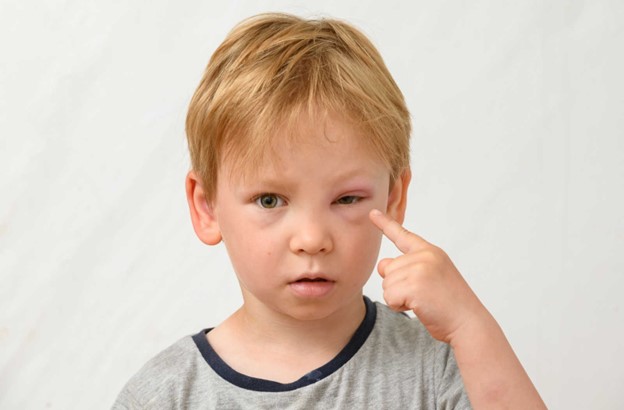A nurse is caring for an 18-month-old infant who is 12 hours postoperative following a myringotomy. Which of the following pain rating scales should the nurse use?
FLACC scale.
Color tool.
Poker Chip Tool.
Numeric scale.
The Correct Answer is A
Choice A rationale:
The FLACC (Face, Legs, Activity, Cry, Consolability) scale is a pain assessment tool commonly used for infants and young children who cannot verbalize their pain. It assesses different behavioral and physiological indicators of pain, such as facial expressions, leg movement, activity level, crying, and response to consoling. Given that the infant is only 18 months old, this scale is appropriate for evaluating their postoperative pain.
Choice B rationale:
The Color tool is not a recognized pain assessment tool. It's essential to use validated and standardized pain assessment scales, and the Color tool does not fit this criterion.
Choice C rationale:
The Poker Chip Tool is not typically used for pain assessment in infants. It's often used with older children to assess pain intensity using a poker chip set that corresponds to different levels of pain. However, for an 18-month-old infant, behavioral assessments like the FLACC scale would be more suitable.
Choice D rationale:
The Numeric scale involves asking the patient to rate their pain on a numerical scale, often from 0 to 10. However, this scale is not appropriate for an 18-month-old infant who is likely unable to comprehend or use numbers to express their pain. The FLACC scale provides a more comprehensive assessment of pain in non-verbal or preverbal children.
Nursing Test Bank
Naxlex Comprehensive Predictor Exams
Related Questions
Correct Answer is A
Explanation
Choice A rationale:
Swelling around the eyelids and mouth could indicate an allergic reaction, which can be severe in some cases. Anaphylaxis is a life-threatening reaction that can occur after immunizations. The nurse's priority is to assess and address any signs of an allergic reaction promptly. Swelling of the face, particularly around the eyes and mouth, is a red flag for potential anaphylaxis, and immediate intervention is necessary to prevent further complications.

Choice B rationale:
A temperature of 100.7 degrees Fahrenheit is considered a mild fever. While it's important to monitor for fever after immunizations, a mild fever alone may not be the nurse's top priority, especially if the child is otherwise stable. Fever can be a common post-immunization response and is often self-limiting.
Choice C rationale:
While monitoring the child's intake is important, only eating 2 ounces during the last feeding is not a priority concern compared to potential allergic reactions or fever. A temporary decrease in appetite following immunizations can be expected and might resolve on its own.
Choice D rationale:
Crying when the injection site is touched is a common response to discomfort from the shot. While it's essential to provide comfort and support to the child, this finding is not indicative of a severe reaction. It's not the nurse's priority compared to potential signs of an allergic reaction or a more significant fever.
Correct Answer is C
Explanation
Choice A rationale:
Perfectionistic behavior is not typically considered a behavioral finding indicative of sexual abuse in a school-age child. Perfectionism may be related to personality traits, family dynamics, or individual tendencies, but it is not a specific behavioral marker for sexual abuse.
Choice B rationale:
Manipulative behavior is not a specific indicator of sexual abuse in a school-age child. Children can display manipulative behavior for various reasons, including seeking attention or attempting to control situations. While behavioral changes can occur in response to trauma, manipulative behavior alone does not necessarily point to sexual abuse.
Choice C rationale:
Withdrawn behavior is a possible indication of sexual abuse in a school-age child. Sexual abuse can cause emotional and psychological distress in children, leading them to withdraw from social interactions. They might become isolated, exhibit changes in their usual behavior, and show decreased interest in activities they previously enjoyed.
Choice D rationale:
Destructive behavior is not a prominent behavioral finding associated specifically with sexual abuse in a school-age child. Destructive behaviors can arise from a range of factors, including emotional difficulties, behavioral disorders, or reactions to stressors. While trauma like sexual abuse can influence behavior, it's not a defining characteristic of sexual abuse in isolation.
Whether you are a student looking to ace your exams or a practicing nurse seeking to enhance your expertise , our nursing education contents will empower you with the confidence and competence to make a difference in the lives of patients and become a respected leader in the healthcare field.
Visit Naxlex, invest in your future and unlock endless possibilities with our unparalleled nursing education contents today
Report Wrong Answer on the Current Question
Do you disagree with the answer? If yes, what is your expected answer? Explain.
Kindly be descriptive with the issue you are facing.
